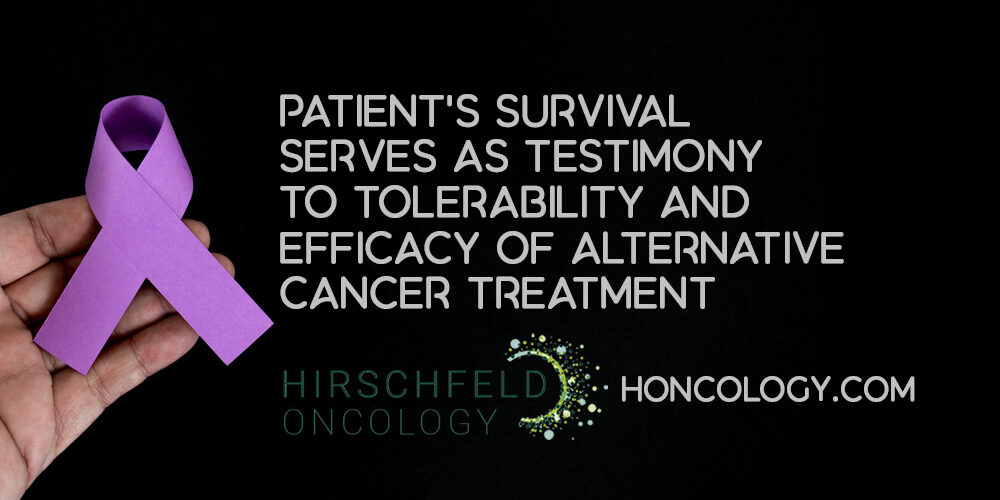Understanding the Impact of Treatment Side Effects on Cancer Patients
Common side effects of cancer treatments
Cancer treatments such as chemotherapy, radiation, and targeted therapies often cause side effects by damaging healthy cells alongside cancer cells. Common physical side effects include fatigue, nausea, hair loss, changes in skin and nails, mouth sores, pain, and blood-related issues like anemia and increased infection risk. Cognitive effects such as "chemo brain"—memory and concentration difficulties—also frequently occur. Psychological burdens include anxiety, depression, and distress.
Physical and psychological symptom burden
Patients undergoing cancer treatment experience a wide range of symptoms that affect both body and mind. Physical symptoms, including pain, swelling, digestive issues, and fatigue, often lead to decreased functionality. Psychological symptoms like anxiety and depression impact emotional well-being and can worsen physical symptoms. For example, anxiety may intensify pain and disrupt sleep.
Importance of managing side effects for quality of life
Effectively managing these side effects is critical to enhancing patients' quality of life during and after treatment. Proactive strategies such as symptom monitoring, patient education, and multidisciplinary care can prevent complications and reduce distress. Supportive interventions—ranging from medication and physical therapy to emotional support and integrative therapies—help patients better cope with symptoms. Overall, addressing treatment side effects promotes patient comfort, maintains daily functioning, and supports adherence to cancer treatments, ultimately improving clinical outcomes and wellbeing.
Recognizing and Managing Common Treatment Side Effects

Side Effects of Chemotherapy, Radiation, and Targeted Therapies
Cancer treatments like chemotherapy, radiation, and targeted therapies commonly cause a range of side effects of cancer treatment by damaging both cancer and healthy cells. Chemotherapy is known for causing fatigue, nausea, hair loss, mouth sores, and blood count changes such as anemia and neutropenia. Radiation therapy can lead to skin changes, tiredness, and hair loss, while targeted therapies tend to have milder side effects like rash, swelling, and vision problems but still require management.Managing Treatment Side Effects
Symptom Management Strategies for Nausea, Fatigue, Pain, Hair Loss, and Cognitive Changes
Effective symptom management is essential to improve patients' quality of life during cancer treatment. Nausea and vomiting can be controlled with anti-nausea medications, dietary modifications like eating cold or small frequent meals, and relaxation techniques.Managing nausea during cancer treatment Fatigue, a nearly universal symptom, is managed through a balance of rest, light exercise, hydration, and mental health support. Managing fatigue during cancer treatment
Pain control often involves medication tailored to the patient’s needs along with complementary approaches such as acupuncture and massage therapy.pain management in oral cancer Temporary hair loss from chemotherapy can be reduced using scalp cooling systems and gentle hair care practices,Paxman cooling system for hair loss while programs like 'Look Good, Feel Better' provide emotional support around appearance changes. Cognitive issues, often called "chemo brain", can be addressed by breaking tasks into smaller steps, using reminders, and supportive therapies such as occupational therapy.Chemo brain symptoms and coping
Tailored Approaches for Physical Symptoms: Neuropathy, Swelling, and Appetite Loss
Neuropathy, presenting as numbness or tingling caused by nerve damage, requires protective measures like proper footwear and safety precautions, alongside medications such as gabapentin and physical therapies.Managing chemotherapy side effects
Swelling (edema and lymphedema) is managed by compression garments, elevating limbs, reducing salt intake, and physical therapy.Lymphedema Management Loss of appetite calls for dietary counseling, consumption of high-protein and calorie-rich foods, and sometimes appetite stimulants.Nutrition Support During Cancer Therapy
Innovative Strategies at Hirschfeld Oncology
Hirschfeld Oncology enhances traditional cancer treatments by incorporating advanced targeted delivery methods such as nanoparticle technology in cancer therapy and receptor-specific antibodies. They utilize novel immunotherapies including CAR-T cell immunotherapy for cancer and immune checkpoint inhibitors mechanisms to minimize side effects and maximize treatment efficacy. Their personalized approach is guided by comparative oncology research with pet dogs, enabling optimized care plans that improve Quality of Life in Cancer Patients alongside conventional therapies.
The Role of Psychological and Emotional Support in Side Effect Management

Anxiety, depression, and emotional distress management
Cancer patients often face significant emotional challenges including anxiety, depression, and distress, which can exacerbate physical symptoms like pain and fatigue. Effective management of these mental health issues is critical to improving overall Quality of Life in Cancer Patients. Psychological support, including counseling and sometimes medication, helps patients cope with these feelings and maintain emotional balance. For more on addressing anxiety and depression in cancer care, see supportive strategies discussed by Penn Medicine. Additional information on mental health support for cancer patients is available from the American Cancer Society.
Importance of support groups and counseling
Support groups provide a valuable space for patients to share experiences and gain comfort from others facing similar challenges, reducing feelings of isolation. Counseling services offer personalized emotional support and strategies to address mental health concerns. These services empower patients to express their emotions, process their diagnosis and treatment impact, and develop resilience. Strategies such as engaging in support groups and seeking professional mental health support are essential coping mechanisms. The American Cancer Society also emphasizes the role of counseling and peer support for cancer side effects.
Techniques such as relaxation, meditation, and integrative therapies
Non-pharmacological approaches like relaxation exercises, meditation, yoga, and mindfulness have proven effective in alleviating anxiety and stress. Integrative therapies such as massage, acupuncture, and music therapy work by reducing psychological distress and physical symptoms through neuroendocrine and autonomic modulation. These supportive strategies contribute to better sleep, reduced fatigue, enhanced mood, and overall well-being during cancer treatment. For detailed insights on non-pharmacological interventions for cancer patients including aromatherapy and guided imagery, see the Exploration Medicine article. Also refer to supportive care specialists and integrative therapies from MSKCC for integrative approaches during treatment.
Integrating Palliative and Supportive Care Early in Treatment

What is the role of a palliative care team in cancer treatment?
Palliative care involves a multidisciplinary approach including physicians, nurses, social workers, pharmacists, physiotherapists, and chaplains. This team collaborates to address not only the physical symptoms of cancer and its treatment but also the emotional, social, and spiritual challenges faced by patients and their families (Palliative care team of specialists, Symptom management in palliative care, Palliative care, Quality of life in serious illness, Improving Quality of Life for Cancer Patients).
How are symptoms like pain, nausea, and fatigue managed through palliative care?
Common issues such as pain, nausea, fatigue, shortness of breath, and anxiety are actively managed using a combination of medication, supportive therapies, and lifestyle modifications. For pain, opioid and non-opioid analgesics are tailored to patient needs. Nausea is managed with antiemetics and dietary adjustments, while fatigue is approached via activity planning, rest, and nutritional support. The goal is to improve daily functioning and overall comfort (Managing cancer-related side effects, Fatigue management during cancer treatment, Nausea and infection control in cancer care, Managing Cancer Treatment Side Effects, pain management in oral cancer, Managing Treatment Side Effects).
Why are goals of care discussions and advanced directives important?
Early conversations about patients' personal values and medical objectives ensure that treatment aligns with their preferences. Discussing goals of care at diagnosis or early in treatment facilitates shared decision-making and helps define priorities such as prolonging life, maintaining independence, or focusing on comfort. Documenting choices through advanced directives like Medical Power of Attorney or POLST forms ensures that patient wishes are respected across care settings (Goals of care discussions, Initiating care goals early, Advanced directives documentation, Planning the transition to end-of-life care).
Through integrating palliative care early in cancer treatment, patients receive comprehensive support that enhances their quality of life, alleviates suffering, and fosters informed, personalized care planning.
Nutritional and Lifestyle Strategies to Enhance Patient Quality of Life

How can dietary management help with nausea and appetite loss during cancer treatment?
Cancer treatments can lead to nausea and a loss of appetite, which can decrease patients' nutritional intake and impact their Quality of Life in Cancer Patients. Managing these symptoms through Managing Treatment Side Effects is effective and important. Patients are advised to eat small, frequent meals instead of larger ones to reduce nausea. Consuming cold or room-temperature foods can also help since they tend to have less odor, which may minimize nausea triggers. Including calorie- and protein-rich foods supports energy levels even when appetite is low. Avoiding alcohol and strongly flavored or spicy foods helps prevent nausea worsening. Maintaining proper oral hygiene can make eating more comfortable, especially when Mouth Sores in Cancer Care are present.
What exercise and hydration tips can help manage fatigue and constipation?
Fatigue is a common side effect of cancer treatment but can be alleviated with carefully paced physical activity. Light exercise, such as walking or gentle stretching, can increase energy and reduce tiredness. It is important to balance activity with rest, taking short naps as needed without disrupting nighttime sleep (Fatigue management during cancer treatment).
Constipation may occur due to medications, reduced activity, or dehydration. Increasing fluid intake is essential; drinking plenty of water throughout the day helps soften stool and prevent dehydration. Incorporating high-fiber foods like fruits, vegetables, and whole grains aids bowel regularity. When combined with physical activity, these approaches promote digestive health and help manage constipation (Managing Treatment Side Effects.
What advice is recommended for hair care, skin protection, and managing physical side effects?
Hair loss during chemotherapy is usually temporary. Protective measures include gentle hair care routines, using mild shampoos and conditioners, avoiding heat styling, and opting for short haircuts to minimize damage. Special scalp cooling caps may be offered in some treatments to reduce hair loss (Hair Loss from Chemotherapy).
Skin and nail changes are common but can be managed with proper skincare. This includes using emollients or moisturizers regularly, protecting skin from sun exposure with sunscreen and clothing, and avoiding harsh soaps or hot water which can cause dryness. Patients should maintain nail hygiene to avoid infections and consult their healthcare team about any skin rashes or nail changes (Skin and Nail Care Tips.
Swelling and numbness may require lifestyle adjustments such as wearing loose clothing, elevating limbs, and taking safety precautions to avoid injuries. Open communication with healthcare providers ensures timely management of these side effects (Managing Cancer Treatment Side Effects).
By integrating these nutritional and lifestyle strategies, patients can better cope with treatment side effects, improving comfort, function, and overall Quality of Life for Cancer Patients.
Hirschfeld Oncology’s Patient-Centered Care Philosophy
Who leads Hirschfeld Oncology and what is their role in cancer care?
Hirschfeld Oncology is led by Dr. Azriel Hirschfeld, a seasoned oncologist with nearly twenty years of experience. His expertise spans gastrointestinal and breast cancers, and he is known for integrating cutting-edge therapies alongside standard treatments. Dr. Hirschfeld directs a patient-focused approach that emphasizes compassion and the swift incorporation of research findings into clinical care, aiming to enhance patient outcomes and quality of life.
How does Hirschfeld Oncology's team approach the design of cancer treatment plans?
The treatment plans at Hirschfeld Oncology are highly personalized. The team, under Dr. Hirschfeld’s guidance, merges current scientific research with individual patient tumor profiles and health status. One innovative aspect includes comparative oncology studies using pet dogs to improve treatment safety and effectiveness. Patients receive continuous communication and monitoring, which allows for timely adjustments to therapies. This ensures that treatments remain effective while side effects are minimized to maintain the patient’s quality of life.
What values underpin the patient care philosophy at Hirschfeld Oncology?
Compassion, scientific rigor, and patient advocacy are the foundational values at Hirschfeld Oncology. Their philosophy focuses on holistic care, addressing not only medical needs but also emotional wellbeing. They encourage strong doctor-patient partnerships and rely on multidisciplinary collaboration paired with state-of-the-art research. Hope and support are central, empowering patients to actively participate in crafting tailored treatment plans that seek both improved survival and life quality.
Innovative Research and Technology Shaping Quality of Life Improvements
How Are Digital Tools Enhancing Health-Related Quality of Life (HRQoL) Assessment?
Recent advancements have integrated digital technologies like wearable devices and mobile apps into cancer care. These tools enable real-time monitoring of physical activity, sleep, and emotional health, offering a continuous and objective view of patient well-being. Digital HRQoL assessments facilitate personalized treatment adjustments and early detection of side effects, ultimately improving patient outcomes through timely interventions (Health-related quality of life in cancer care).
What Role Do Comparative Oncology Studies Play in Patient Quality of Life?
Comparative oncology research has introduced novel methods for evaluating how treatments affect quality of life. For example, studies combining the time needed to achieve a clinical benefit with treatment trade-offs help patients and clinicians visualize expected quality of life outcomes. These insights empower patients to make treatment choices aligned with personal preferences, as demonstrated by improved recovery and emotional well-being in women undergoing less invasive surgery for endometrial cancer (Improving patient quality of life).
How Are Advanced Therapies and Personalized Medicine Impacting Side Effect Management?
Innovative therapies that minimize damage to healthy cells, including targeted treatments and pharmacogenomic testing, are transforming side effect management. Pharmacogenomics allows tailoring drug choices to individual genetic profiles, reducing adverse effects and enhancing efficacy. Additionally, advancements in medication for nausea and other symptoms, combined with supportive non-pharmacological interventions for cancer patients, ensure more comprehensive side effect control, thus elevating overall quality of life during cancer treatment (Managing Cancer Treatment Side Effects, Managing side effects of cancer treatment.
Towards Holistic Cancer Care: Enhancing Quality of Life Through Side Effect Management
Importance of Multidisciplinary Approaches
Managing cancer treatment side effects effectively requires a multidisciplinary team including doctors, nurses, social workers, mental health specialists, and rehabilitation therapists. This team-based approach allows for comprehensive care addressing physical, emotional, and social issues simultaneously. Coordinated care ensures side effects like fatigue, pain, cognitive changes, and emotional distress are promptly identified and managed.
Patient Empowerment Through Education and Communication
Empowering patients with clear, proactive information about potential side effects encourages prompt reporting and adherence to management strategies. Open communication strengthens the patient-provider relationship, enabling personalized care. Tools like symptom diaries and digital apps help patients track symptoms, facilitating timely interventions.
Future Directions in Supportive Cancer Care
Advancements include integrating palliative care early in treatment, leveraging digital technologies for real-time symptom monitoring, and developing personalized interventions based on patient genetics and preferences. Emphasis on emotional support, fertility preservation, and holistic therapies such as mindfulness and physical therapy improves overall well-being.
Such holistic strategies not only reduce physical and psychological suffering but also enhance resilience and quality of life during and after cancer treatment.





.png)


.png)
.png)




